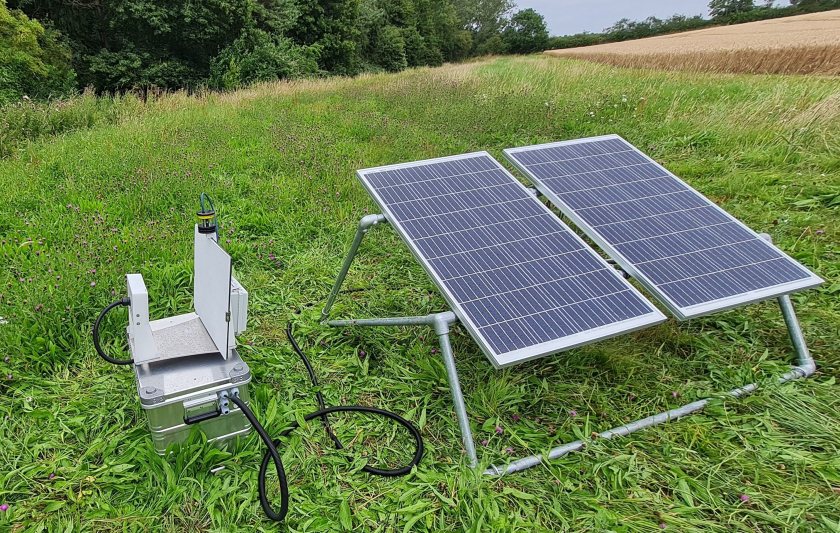
The study will take place at four pairs of farms, in Dorset, Wiltshire, Oxfordshire and Northamptonshire (Photo: UKCEH)
Scientists are using automated sensors and AI over the next four years to demonstrate the effectiveness of on-farm environment and peatland restoration schemes.
The UK Centre for Ecology & Hydrology (UKCEH) will be deploying solar-powered biodiversity monitoring stations comprising camera ‘traps’ and acoustic recording equipment at farms to monitor wildlife.
There will be stations at farms that are undertaking practices to reduce emissions, increase carbon capture and support wildlife, such as agroforestry and wildflower hay meadows.
Stations will be placed in areas of the farm that do, and do not, have agri-environment measures, and will be used to measure the impacts of these schemes on species populations.
They will also be located at degraded peatland areas to compare species populations on farms which remain drained for agricultural use and nearby sites that are being rewetted to provide wetland habitats that support biodiversity and absorb carbon dioxide from the atmosphere.
Researchers will then use AI software to identify species from the photographs or recordings of their calls.
The study is part of AgZero+ which is a UKCEH-led five-year research programme supporting the UK’s transition toward its new agricultural support system.
Professor Richard Pywell of UKCEH, who is leading the programme, said: “Using the latest technology, we will monitor species at farms that have different crop and land management practices, to demonstrate how a range of farming systems and agri-environment measures affect populations.
"Our monitoring will provide scientific evidence to inform sustainable land management policies and practices, which have a positive effect on biodiversity and mitigate climate change while enhancing crop production.”
Initially, automated stations with lighting to attract moths and high-resolution cameras to capture images for subsequent identification via AI are being set up over the summer at 10 sites, with two stations at each.
The study will take place at four pairs of farms, in Dorset, Wiltshire, Oxfordshire and Northamptonshire, to compare the impact of agri-environment schemes and two peatland sites, one which is being farmed and another which is being restored, in Cambridgeshire.
UKCEH will redeploy the automated monitoring stations at additional sites across England each year, being in operation between March and October in 2024, 2025 and 2026.
Dr Tom August, a computational ecologist at UKCEH who is overseeing the deployment of the monitoring stations, explained: “New sensor and AI technology is transforming the way ecologists monitor biodiversity.
"Automated biodiversity monitoring stations with solar power allow us to monitor wildlife round-the-clock in remote locations without being on site.
"AI technologies allow us to process the thousands of images and recordings they produce far faster than a human can.”
UKCEH will present its findings after completion of the four-year study though preliminary data will be available during the project.





